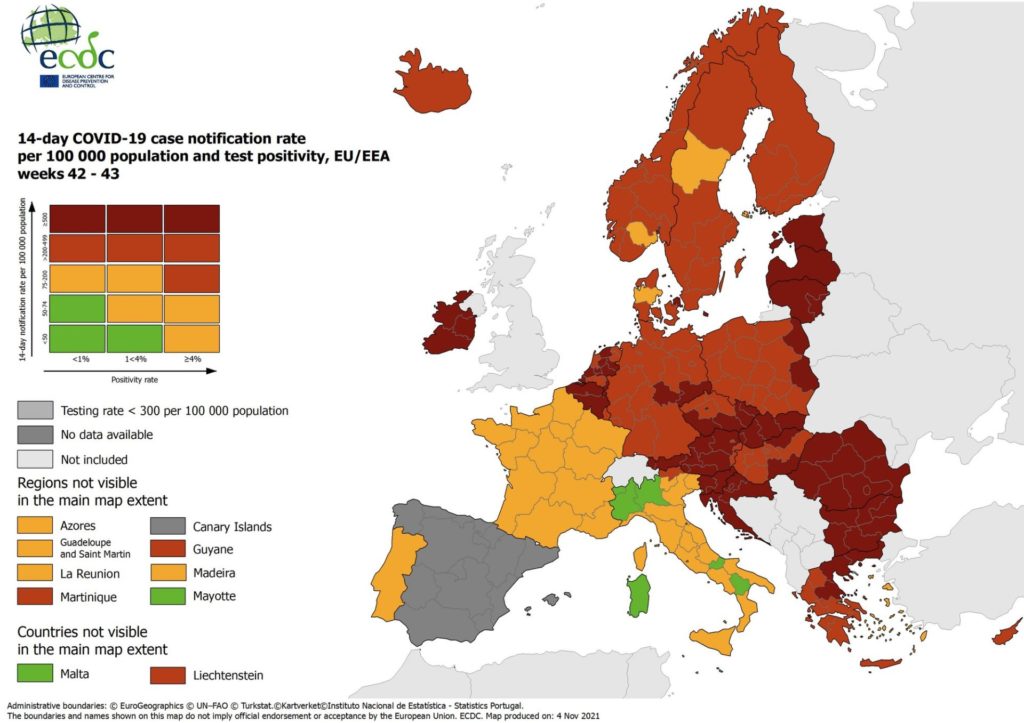A week after the Brussels-Capital Region and Wallonia, Flanders has now also become darker, giving all of Belgium a dark red colour in the latest update of the European Centre for Disease Prevention and Control (ECDC)'s map.
The fourth wave in Belgium is now clearly visible on the ECDC travel map as Flanders is now also coloured dark red, meaning that at least 500 new cases per 100,000 inhabitants have been confirmed over the past two weeks.
Last week, Flanders still had a regular red colour, indicating at least 200 confirmed cases per 100,000 inhabitants, while Wallonia and Brussels were already dark red.
Like last week, France and Portugal are coloured completely orange.
The Netherlands and Germany were already completely red last week, but dark red regions are now also appearing in both countries. Austria also turned fully dark red.
In northern Europe, too, the situation is worsening, as Sweden – which was completely orange last week – has now turned completely red. Norway still has an orange region in the south, the rest of the country is red.
In Eastern Europe, the situation is most dramatic: the Baltic states of Estonia, Latvia and Lithuania remain dark red, as do Romania, Slovenia, Croatia and Bulgaria.
In Poland and the Czech Republic, there are still red areas, but a number of dark red regions are also popping up.
At the border with Bulgaria, Greece is also turning dark red, with the rest of the country still being coloured a regular red. Only some of the Greek islands are still orange.
Itlay is also largely orange, but is the only country that still has a few green regions, even though they are also becoming fewer.

